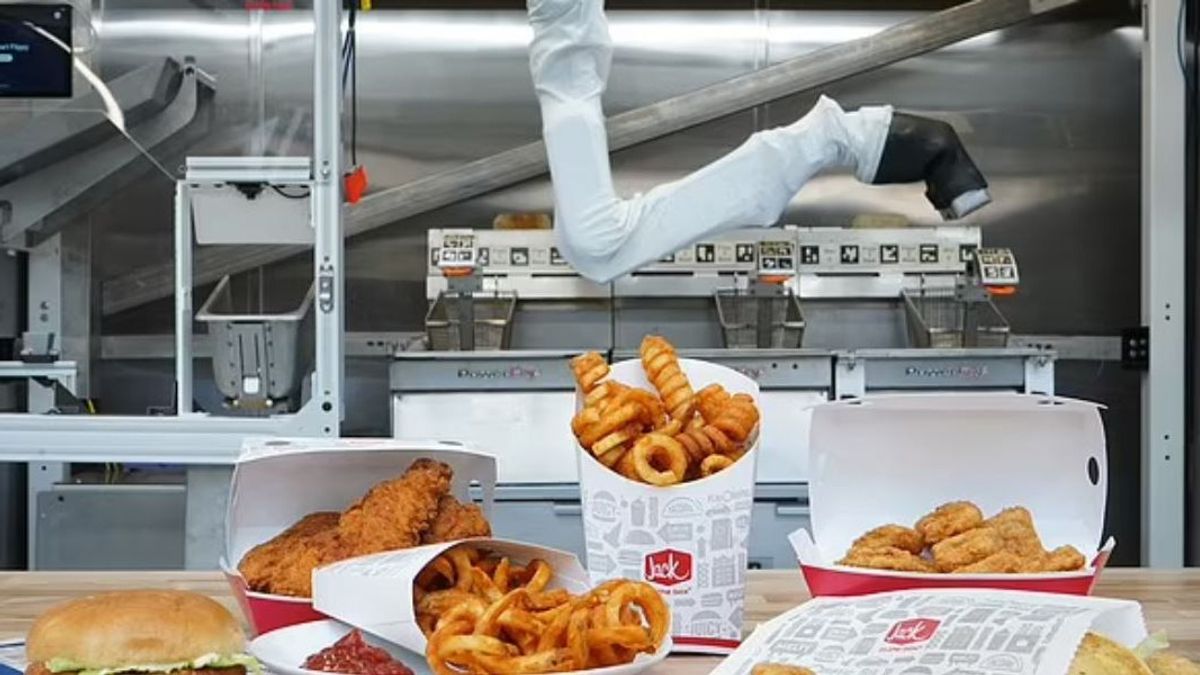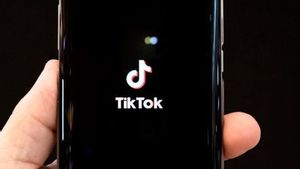JAKARTA The appearance of the restaurant robot seems to be just a matter of time. The main fast food chain will use the robot to reverse the burger, brew the chip, and greet customers. They will soon replace human duties, without ever complaining,
White Castle is testing the Flippy robot at 100 locations and Chipotle uses a one-hand robot to make kurtilla chips at one location. Both cost $3.000 per month and Starbucks has an AI-powered robot worth $18,000 (IDR 280.7 million) at at least 1,200 locations.
As food costs rise and intense labor shortages grip the US, then paying monthly rent for machines or robots has become a cost-effective option.
The National Restaurant Association recently reported that four of the five restaurant operators have been short of staff since the COVID-19 pandemic hit in 2020.
However, experts have not sold it and believe that robots will replace human workers in the next few years.
"I think there are a lot of experiments that will take us somewhere at some point, but we are still a very labor-intensive and labor-driven industry," David Henkes, principal at Technomic, a restaurant research firm, told CNBC.
In Episode 2 of Miso x EPOMike and Callum Dive Into:- How Flippy 2 can improve the financial performance of restaurants by redeploying labor and increasing the speed of service- Introduction to Sippy, the automated drink dispenser, that almost doubles drink service speed pic.twitter.com/nmwz1fcn0V
— Miso Robotics (@misorobotics) June 18, 2022
A labor shortage has forced restaurant owners to offer higher wages to attract more staff, combined with rising food costs. But this is where automation comes to save.
Starbucks has launched its more than $21 million AI-powered medium maker running on the company's Deep Brew software.
And even if it doesn't make coffee cups, it can mix the drinks right and do it faster than a human barista.
The same software has also been added to the coffee maker's drive-thru line, which greets customers and receives their orders, reducing the number of staff needed at a location.
Miso Robotics, a California-based company, is a major supplier in the industry. Its kitchen robot, Flippy, is capable of cooking 300 burgers and making French fries in hundreds of baskets every day.
The company claims its technology is capable of performing food preparation tasks twice as fast as human workers and 30 percent more efficient.
Flippy 2, the company's most advanced model, is used in leading American fast food chains such as White Castle, Jack in the Box, Inspire Brands (Cally Wild Wings, Arby's and Sonic parent company), Wings and Rings and Wing Zone.
While most of the restaurants have one or two locations with Flippy, White Castle announced in 2022 that it is adding Flippy 2 to 100 locations.
The second-generation Flippy not only flips hundreds of burgers every day but can also fry potatoes, onion rings, and other menus. Along with Flippy, Miso Robotics also launched the Chippy robot.
The robot is capable of making kurtilla chips and is used in a Chipotle restaurant in California.
To ensure Chippy creates the perfect kurtilla chips, Miso Robotics trains them with Chipotle prescriptions corn flour, water and solar oil, salt sprinkles, and fresh lime juice after cooking.
Seattle startup Artly also started working on a robot coffee maker in 2020 called Jarvis.
The one-hand robot was trained to carefully pour steam foam on top of akuis in one of the company's coffee shops in Washington state.
For coffee shops that need two or three baristas, Artly requires one staff and barista bot like Jarvis.
Another Seattle-based startup, Picnic, offers automation solutions for pizza manufacturing - from adding sauce to layered cheese and placing it on top of other toppings. And Dominos is also testing technology at one of its locations in Germany.
The Daily Mail reports that fast food chains not only use robots to make food and drinks, but they also use artificial intelligence to receive orders.
Beijing Bell also employs AI to accept orders, as does Popeyes and Paneraread.
According to Popeyes' location using the technology, beverage sales increased 150 percent as AI named Tori offers high-margin menu items to customers.
Tori, created by OpenCity, who is also able to deliver orders that are 100 percent correct at any time.
A labor shortage began with the COVID-19 pandemic, as many restaurants were forced to close due to strict lockdown orders, and the industry did not appear to be able to bounce back.
A study by the National Economic Bureau found that COVID-19 reduced hundreds of thousands of US workers.
The English, Chinese, Japanese, Arabic, and French versions are automatically generated by the AI. So there may still be inaccuracies in translating, please always see Indonesian as our main language. (system supported by DigitalSiber.id)













